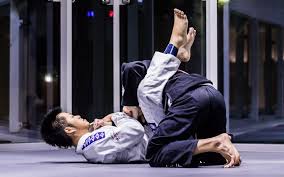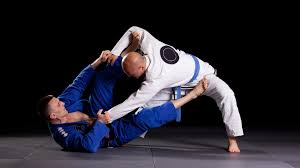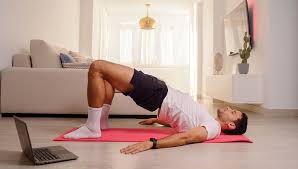Brazilian Jiu-Jitsu (BJJ) is a physically demanding martial art that requires a combination of strength, technique, flexibility, and mobility. Flexibility and mobility play crucial roles in BJJ, allowing practitioners to execute techniques more effectively and avoid injuries. Whether you’re a beginner or a seasoned practitioner, improving your flexibility and mobility can enhance your performance on the mats.
In this article, we will explore various techniques, exercises, and tips to help you improve your flexibility and mobility for BJJ, allowing you to perform better and reduce the risk of injury.
Understanding Flexibility and Mobility in BJJ

Flexibility vs. Mobility
Before diving into the exercises and techniques, it’s essential to understand the difference between flexibility and mobility:
- Flexibility refers to the ability of your muscles to stretch and lengthen. This is often associated with static stretching, where you hold a stretch for a prolonged period.
- Mobility refers to the range of motion of your joints and how well they move through that range. It involves dynamic movements and the ability to control your body within that range of motion.
Both flexibility and mobility are critical in BJJ. Flexibility allows you to achieve positions such as triangles or rubber guard, while mobility ensures that your joints can move freely and safely through different positions and transitions during sparring and drilling.
Benefits of Flexibility and Mobility in BJJ
Improving your flexibility and mobility offers several advantages:
- Enhanced Technique Execution: Increased flexibility allows you to perform certain techniques, like leg locks or guard transitions, with greater ease.
- Injury Prevention: A flexible and mobile body is less prone to injuries, as it can adapt to sudden movements and awkward positions more easily.
- Better Recovery: Flexibility and mobility exercises improve blood flow to your muscles, helping with recovery after intense training sessions.
- Increased Endurance: A body that moves efficiently expends less energy, leading to improved endurance during long sparring sessions or competitions.
Key Areas to Focus on for BJJ Flexibility and Mobility
To optimize your performance in BJJ, it’s essential to focus on improving flexibility and mobility in specific areas of your body:
- Hips: The hips are the cornerstone of BJJ movement, involved in guard play, sweeps, and submissions. Hip flexibility and mobility allow you to move fluidly between different positions.
- Hamstrings: Flexible hamstrings help with guard retention, leg locks, and high guard positions. Tight hamstrings can limit your movement and make you more susceptible to injuries.
- Shoulders: BJJ places a lot of stress on the shoulders, especially during submissions like kimuras or omoplatas. Shoulder flexibility and mobility reduce the risk of injury and improve your ability to execute and escape submissions.
- Spine: A flexible and mobile spine allows you to perform movements like back bridges and guard inversions. It also helps in maintaining posture while in the guard.
- Ankles: Flexible ankles are crucial for footwork, balance, and submissions like foot locks. Mobility in the ankles ensures smooth transitions and helps prevent injuries during quick directional changes.
Exercises to Improve Flexibility and Mobility for BJJ

1. Hip Openers
Hip openers are essential for BJJ, as they increase the range of motion in your hips, making it easier to perform guard techniques and transitions.
- Pigeon Pose: This yoga pose stretches the hip flexors and glutes. To perform, start in a push-up position, bring one knee forward and place it behind your hand, then stretch the opposite leg behind you. Hold the position for 30-60 seconds on each side.
- Butterfly Stretch: Sit on the floor, bring your feet together, and let your knees fall to the sides. Press your knees down with your elbows to deepen the stretch. Hold for 30-60 seconds.
2. Hamstring Stretches
Flexible hamstrings are crucial for high guard positions and leg attacks.
- Standing Forward Bend: Stand with your feet together, hinge at your hips, and reach for your toes. Hold for 30-60 seconds, feeling the stretch in your hamstrings.
- Seated Forward Fold: Sit on the floor with your legs extended in front of you. Reach for your toes while keeping your back straight. Hold for 30-60 seconds.
3. Shoulder Mobility Drills
Shoulder mobility is vital for preventing injuries and improving your ability to defend against submissions.
- Shoulder Circles: Stand with your feet shoulder-width apart, extend your arms to the sides, and make small circles with your arms. Gradually increase the size of the circles. Perform this exercise for 30 seconds in each direction.
- Shoulder Dislocates: Hold a resistance band or a towel with a wide grip. Raise it above your head and slowly bring it behind your back, then return to the starting position. Repeat for 10-15 reps.
4. Spinal Flexibility
Improving your spinal flexibility will help with guard inversions and maintaining posture.
- Cat-Cow Stretch: Start on your hands and knees. Arch your back (cow pose) and then round it (cat pose) in a flowing motion. Repeat for 10-15 reps.
- Bridge Pose: Lie on your back with your knees bent and feet flat on the floor. Press through your heels to lift your hips, creating a bridge with your body. Hold for 20-30 seconds.
5. Ankle Mobility Exercises
Ankle mobility is essential for balance and footwork in BJJ.
- Ankle Circles: Sit with one leg extended and rotate your ankle in circles. Perform this exercise for 30 seconds in each direction for both ankles.
- Calf Stretch: Stand facing a wall, place your hands on the wall, and step one foot back. Press your heel into the ground to stretch your calf and Achilles tendon. Hold for 30 seconds on each side.
Incorporating Flexibility and Mobility into Your Training Routine

To see improvements in your BJJ flexibility and mobility, it’s essential to incorporate these exercises into your regular training routine. Here’s how to do it:
- Warm-Up: Begin your training sessions with dynamic stretches and mobility drills. This will prepare your body for the demands of BJJ and reduce the risk of injury.
- Cool Down: After training, focus on static stretching to improve flexibility. This will help with recovery and reduce muscle soreness.
- Consistency: Flexibility and mobility improvements take time, so consistency is key. Aim to include stretching and mobility exercises in your routine at least 3-4 times a week.
- Yoga for BJJ: Consider incorporating yoga into your training routine. Yoga combines stretching, strength, and mindfulness, making it an excellent complement to BJJ training.
Conclusion
Improving your flexibility and mobility is essential for optimizing your performance in Brazilian Jiu-Jitsu. By focusing on specific areas such as the hips, hamstrings, shoulders, spine, and ankles, and incorporating regular flexibility and mobility exercises into your routine, you’ll see improvements in your technique, reduce the risk of injury, and enhance your overall BJJ experience.
Remember that consistency and patience are key to making lasting progress. Whether you’re a beginner or an experienced practitioner, investing time in flexibility and mobility training will pay off on the mats, helping you reach new levels in your BJJ journey.



